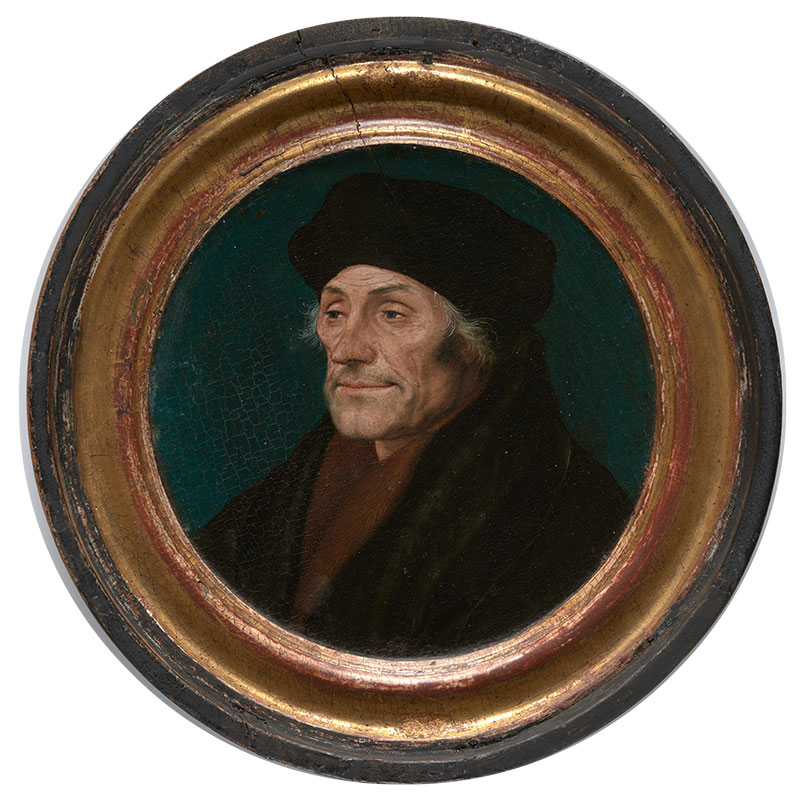
In 1523 Holbein developed a portrait of Erasmus that reflected the sitter’s scholarly reputation. Holbein portrayed Erasmus in three-quarter pose and dressed in a black robe and hat, emphasizing his intellectual character through the strong jawline and deep-set eyes. This circa 1532 painting of the then sixty-two-year-old humanist was based upon that earlier image but sensitively adjusted to convey Erasmus’s advanced age. His cheeks are more sunken, his forehead is wrinkled, and snow-white hair now peeks from underneath his cap. Such portrait roundels often served as intimate gifts between family members or close friends. This example was in the possession of Hieronymus Froben, son of the printer Johann Froben and Erasmus’s godson.
Hans Holbein the Younger (1497/98–1543)
Erasmus of Rotterdam, ca. 1532
Oil on panel
Kunstmuseum Basel, Amerbach-Kabinett 1662; 324
Desiderius Erasmus was perhaps the first celebrity author in Europe, whose books on theology, philosophy, and the classics were published by the thousands on an almost annual basis. Although educated as a priest, he spent his early years as a peripatetic professor at universities in Cambridge, England, Turin, Italy, and Leuven, Belgium. A central figure of the European Renaissance, Erasmus corresponded with humanist luminaries from England to Italy, and counselled kings and church leaders.
Although Erasmus often argued for the primacy of word over image in the representation of an individual, he had a clear understanding of the power of the visual arts. He commissioned the artists Quentin Metsys and Albrecht Dürer to portray him as a scholar and author, but it was Holbein the Younger who created the de facto portrait of the great humanist. The artist and his Basel workshop produced multiple images of Erasmus, including this small roundel of the older Erasmus, attributed exclusively to the hand of Holbein himself. Devoid of any overt symbols or objects, the portrait focuses upon the face of the scholar—the man himself—rather than his occupation.
